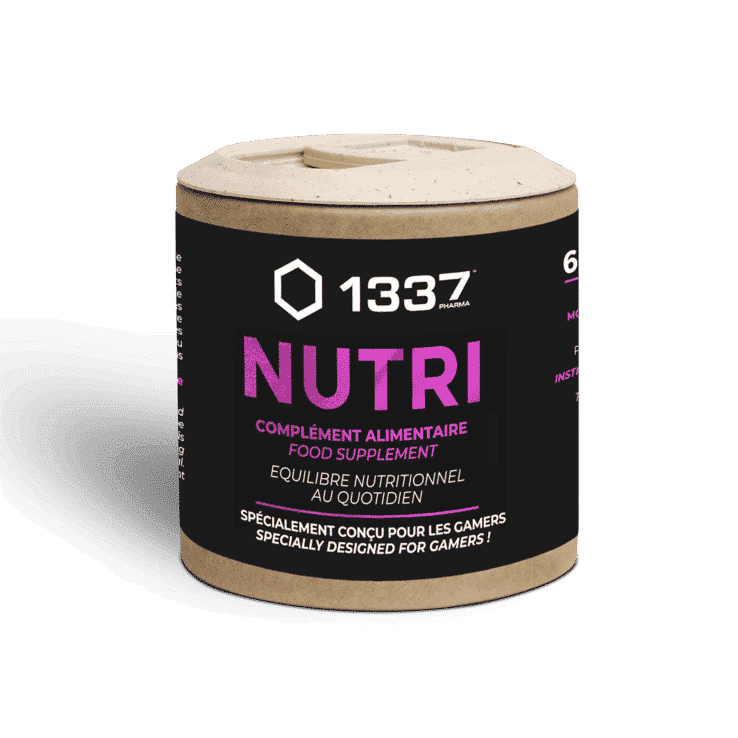Calcium
Ingredient
What is calcium?
Where does it come from?
Why is it used?
What are the benefits?
Bibliography
What is calcium?
Calcium is a mineral your body needs to build and maintain strong bones and to perform many important functions. Calcium is the most abundant mineral in the body. Almost all of the body’s calcium is stored in bones and teeth, giving them structure and hardness.
Your body needs calcium for muscles to move and for nerves to carry messages between your brain and every part of your body. Calcium also helps blood vessels circulate blood throughout the body and helps release hormones that affect many body functions.
Where does it come from?
Calcium is found in many multivitamin-mineral supplements, in calcium supplements, and in supplements that contain calcium and other nutrients like vitamin D.
Check the MSDS label to determine the amount of calcium in the supplement. The two main forms of calcium found in supplements are calcium carbonate and calcium citrate. Calcium carbonate is better absorbed when taken with food.
Why is it used?
• Your body needs calcium to build and maintain strong bones.
Over 99% of your body’s calcium is stored in your bones and teeth (Institute of Medicine (US) Committee to Review Dietary Reference Intakes for Vitamin D and Calcium, 2011)
In the bloodstream, it is used to send nerve signals, release hormones like insulin, and regulate the contraction and expansion of muscles and blood vessels (Institute of Medicine (US) Committee to Review Dietary Reference Intakes for Vitamin D and Calcium, 2011)
It’s so important that if you don’t get the recommended amount from your diet, your body will take it from your skeleton and teeth to use elsewhere, weakening your bones.
• They may help prevent bone loss in postmenopausal women
After menopause, women lose bone mass due to low estrogen levels.
Fortunately, supplements can help. Several studies have suggested that giving postmenopausal women calcium supplements – usually around 1000 mg per day – can reduce bone loss by 1-2% (Lamy & Burckhardt, 2014)
The effect seems to be greater in women with low calcium intake and in the first two years of taking supplements.
Additionally, there does not appear to be any additional benefit to taking larger doses (Anderson et al., 2012)
• They can aid in fat loss
Studies have associated low calcium intake with high body mass index (BMI) and high percentage of body fat (Bueno et al., 2008)
A 2016 study looked at the effects of giving a daily 600 mg calcium supplement to overweight and obese college students with very low calcium intakes.
The study found that those who received a supplement containing 600 mg of calcium and 125 IU of vitamin D lost more body fat on a calorie-restricted diet than those who did not receive the supplement (Zhu et al. , 2013)
It is often recommended to take vitamin D with calcium, as this improves its absorption.
• Calcium may help reduce the risk of colon cancer
According to a large study, calcium from dairy products and supplements may reduce the risk of colon cancer (Park et al., 2009)
An earlier review of 10 studies found similar results (Cho et al., 2004)
• Supplements may help improve metabolic markers
Several studies have shown that taking calcium supplements can improve metabolic markers, especially when taken with vitamin D.
In a 2016 study, 42 pregnant women took supplements containing calcium and vitamin D. Several of their metabolic markers improved, including blood pressure and inflammation markers (Asemi et al., 2016)
Other research has shown that children of women who took calcium supplements during pregnancy have lower blood pressure at age seven than children of mothers who did not (Jamshidi & Kelishadi , 2015)
In a recent study, more than 100 overweight, vitamin D-deficient women with polycystic ovary syndrome (PCOS) were given either a calcium and vitamin D supplement or a placebo.
Those who took the supplement showed improvement in inflammation markers, insulin and
triglyceride levels (Asemi et al., 2015; Foroozanfard et al., 2015)

What are the benefits?
Calcium mainly involved in the formation and strength of bones in association with vitamin D (99% of total calcium). Indeed, without the latter, calcium cannot bind to the bones and cannot play its role of preserving bone capital. It also helps in the formation of teeth.
Bibliography
1. Alvaro, PK, Roberts, RM, & Harris, JK (2013). A Systematic Review Assessing Bidirectionality between Sleep Disturbances, Anxiety, and Depression. sleeping, 36(7), 1059-1068. https://doi.org/10.5665/sleep.2810
2. Anderson, GJ, Connor, WE, & Corliss, JD (1990). Docosahexaenoic acid is the preferred dietary n-3 fatty acid for the development of the brain and retina. Pediatric Research, 27(1), 89-97. https://doi.org/10.1203/00006450-199001000-00023
3. Balanzá-Martínez, V., Fries, GR, Colpo, GD, Silveira, PP, Portella, AK, Tabarés-Seisdedos, R., & Kapczinski, F. (2011). Therapeutic use of omega-3 fatty acids in bipolar disorder. Expert Review of Neurotherapeutics, 11(7), 1029-1047. https://doi.org/10.1586/ern.11.42
4. Balbás, GM, Regaña, MS, & Millet, PU (2011). Study on the use of omega-3 fatty acids as a therapeutic supplement in treatment of psoriasis. Clinical, Cosmetic and Investigational Dermatology, 4, 73-77. https://doi.org/10.2147/CCID.S17220
5. Bélanger, SA, Vanasse, M., Spahis, S., Sylvestre, M.-P., Lippé, S., L’heureux, F., Ghadirian, P., Vanasse, C.-M., & Levy, E. (2009). Omega-3 fatty acid treatment of children with attention-deficit hyperactivity disorder: A randomized, double-blind, placebo-controlled study. Paediatrics & Child Health, 14(2), 89-98. https://doi.org/10.1093/pch/14.2.89
6. Benton, D. (2007). The impact of diet on anti-social, violent and criminal behavior. Neuroscience and Biobehavioral Reviews, 31(5), 752-774. https://doi.org/10.1016/j.neubiorev.2007.02.002
7. Berbert, AA, Kondo, CRM, Almendra, CL, Matsuo, T., & Dichi, I. (2005). Supplementation of fish oil and olive oil in patients with rheumatoid arthritis . Nutrition (Burbank, Los Angeles County, Calif.), 21(2), 131-136. https://doi.org/10.1016/j.nut.2004.03.023
8. Bernstein, AM, Ding, EL, Willett, WC, & Rimm, EB (2012). A meta-analysis shows that docosahexaenoic acid from algal oil reduces serum triglycerides and increases HDL-cholesterol and LDL-cholesterol in persons without coronary heart disease . The Journal of Nutrition, 142(1), 99-104. https://doi.org/10.3945/jn.111.148973
9. Bloch, MH, & Qawasmi, A. (2011). Omega-3 fatty acid supplementation for the treatment of children with attention-deficit/hyperactivity disorder symptomatology: Systematic review and meta-analysis . Journal of the American Academy of Child and Adolescent Psychiatry, 50(10), 991-1000. https://doi.org/10.1016/j.jaac.2011.06.008
10. Brusch, CA, & Johnson, ET (1959). A new dietary regimen for arthritis: Value of cod liver oil on a fasting stomach . Journal of the National Medical Association, 51(4), 266-270 passim.
11. Calder, PC (2006). N-3 polyunsaturated fatty acids, inflammation, and inflammatory diseases . The American Journal of Clinical Nutrition, 83(6 Suppl), 1505S-1519S. https://doi.org/10.1093/ajcn/83.6.1505S
12. Cappuccio, FP, Cooper, D., D’Elia, L., Strazzullo, P., & Miller, MA (2011). S leep duration predicts cardiovascular outcomes: A systematic review and meta-analysis of prospective studies . European Heart Journal, 32(12), 1484‐1492. https://doi.org/10.1093/eurheartj/ehr007
13. Cappuccio, FP, D’Elia, L., Strazzullo, P., & Miller, MA (2010). Quantity and quality of sleep and incidence of type 2 diabetes: A systematic review and meta-analysis. Diabetes Care, 33(2), 414-420. https://doi.org/10.2337/dc09-1124
14. Cazzola, R., Russo-Volpe, S., Miles, EA, Rees, D., Banerjee, T., Roynette, CE, Wells, SJ, Goua, M., Wahle, KWJ, Calder, PC, & Cestaro, B. (2007). Age and dose dependent effects of an eicosapentaenoic acid-rich oil on cardiovascular risk factors in healthy male subjects . Atherosclerosis, 193(1), 159-167. https://doi.org/10.1016/j.atherosclerosis.2006.06.008
15. Ciubotaru, I., Lee, Y.-S., & Wander, RC (2003). Dietary fish oil decreases C-reactive protein, interleukin-6, and triacylglycerol to HDL-cholesterol ratio in postmenopausal women on HRT . The Journal of Nutritional Biochemistry, 14(9), 513-521. https://doi.org/10.1016/s0955-2863(03)00101-3

